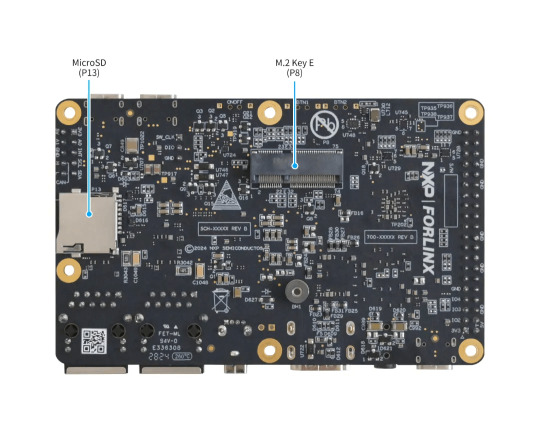#embeddeddev
Explore tagged Tumblr posts
Text
TLV320DAC3100 first bops 🔊🎶💃🕺
OK, after many hours spent with Claude on writing a driver for the TLV320DAC3100 (https://www.digikey.com/en/products/detail/texas-instruments/TLV320DAC3100IRHBR/2260591), we finally have it configured using our driver, and playing an MP3 stream on this ESP32. This I2S DAC has a particularly complex PLL and audio-routing system, so it's not one where you can just pipe in I2S data and have it magically play. One nice thing we got working on is the MCLK, which is generated from the BCLK, so it'll work great with anything from an Arduino-compatible to a single-board computer like Raspberry Pi. We're hoping to get the headphone detection working next so that we can turn off the amp when the headphone is plugged in. Also, it should be able to control the volume from the headset buttons. Also, we want to get the internal beep generator going so we can make tones separate from the audio stream for UI notifications.
#tlv320dac3100#dac#esp32#i2s#audioengineering#opensource#mp3streaming#embeddedhardware#hardwarehacking#arduino#raspberrypi#microcontrollers#firmware#coding#electronics#headphones#pll#audioprocessing#dsp#mclk#bclk#headphonemod#techinnovation#audiophile#sounddesign#makercommunity#opensourcehardware#iot#embeddeddev#beepgenerator
38 notes
·
View notes
Text
Shared Locker Voice Solution: KT148A Voice - broadcasting Chip Enables Intelligent Interaction
With the increasing frequency of people's travel, shopping, and leisure activities, the demand for temporary storage of carried items has skyrocketed. In shopping malls, consumers need to store heavy coats and a large number of shopping bags. At railway stations and airports, passengers hope to safely store their luggage for convenient travel. In campus libraries, students desire a convenient storage space for books and personal items. Shared lockers have emerged as a solution, providing users with readily available storage services in the form of self - service rentals. They effectively solve the problem of temporary item storage and significantly improve the service efficiency of public places and user convenience.

Shared lockers usually have a voice chip installed to achieve artificial voice prompt functions. When users store items, they will receive a voice prompt to remind them to close the cabinet door.
KT148A Voice Chip Shared Locker Voice Solution:
The KT148A chip integrates input/output ports, audio PWM direct - drive speakers, a 32 - bit DSP, a 5MHZ internal oscillator (which can be increased to 120MHZ through PLL), etc. It supports 8 - bit ordinary one - line commands, can support 420 seconds of voice, 224 segment addresses, and if there is a need for more addresses, it can be expanded through the F4 command. For details, please refer to section 4.5 of the user manual. This series of voice chips adopts a single - chip solution, has a short production cycle, and is suitable for large, medium, and small - scale batch production. Even for small - quantity production, products can be obtained in a timely manner.

Voice Content of KT148A Voice Chip in Lockers:
The KT148A chip can easily support the customization of up to 200 + voice contents. Enterprises can customize personalized voice interaction solutions according to different application scenarios, user groups, and brand tones.
1.Operation Guidance Category:
"Please press your finger for fingerprint verification."
"Please enter the 6 - digit pickup code on the screen and then press the confirmation key."
2.Status Prompt Category:
"The cabinet door has been successfully opened. Please store or retrieve items within 30 seconds."
"The locker space is full. Please choose another cabinet."
3.Safety Reminder Category:
"Please take good care of your items and remember to close the cabinet door when leaving."
"Do not store valuables, flammable or explosive items in the cabinet."
4.Fault Feedback Category:
"Sorry, fingerprint recognition failed. Please try again or contact customer service."
"The system has detected an abnormal cabinet door. Please try again later."
Enterprises can also add brand - exclusive voices, such as welcome messages and brand promotion messages, to strengthen users' awareness and memory of the brand, and enhance brand image and user stickiness.

Control Modes of KT148A Voice Chip:
Button - triggered Mode:When users operate the buttons of the shared locker, the chip triggers corresponding voice prompts according to the button commands. For example, when the "Store" button is pressed, the chip immediately broadcasts "Please select an available cabinet." When the "Pick up" button is pressed, it prompts "Please enter the pickup code." This guides users to complete the operation through voice, reducing the complexity of operation.
Sensor - triggered Mode:With the help of the sensors built into the locker, intelligent voice interaction is achieved. When a user approaches the locker, the human infrared sensor detects the signal, and the chip automatically plays the welcome message "Welcome to use XX shared lockers." When the cabinet door is opened or closed, the door magnetic sensor triggers the chip to broadcast prompts such as "The cabinet door has been opened. Please store or retrieve items." and "The cabinet door has been closed. Please leave with peace of mind." providing users with timely and considerate voice feedback.
Remote Control Mode:By connecting to the cloud management system, the KT148A chip supports remote voice content update and function upgrade. Enterprises can remotely modify voice prompt contents according to operational needs, release promotional activity information, safety notices, etc. When the system detects a locker failure, it can also remotely control the chip to broadcast fault prompts, guiding users to contact customer service for handling, achieving intelligent and efficient management.

Product details, product information, and sample acquisition and ordering links: KT148A
#KT148AVoiceChip#SharedLockers#IntelligentInteraction#VoiceSolution#voicetechnology#iot#Innovation#EmbeddedDev#HardwareEngineers#embeddedsystems#hardwaredesign#VoiceTech#electronic#embeddeddevelopment#coding#devlog#Embedded#VoiceTechnology#SmartStorage#EmbeddedDesign#OpenHardware#voicechip#audiochip
0 notes
Text
NXP Unveils FRDM i.MX 93 Development Board to Accelerate Modern Industrial and Edge Intelligence Advancements
Recently, NXP Semiconductors introduced the FRDM i.MX 93 development board, the first development board in the FRDM series based on MPU. It is designed with a focus on low cost and compactness, featuring the NXP i.MX 93 series application processor. It aims to provide users with an efficient and reliable solution for developing modern industrial control and edge intelligence applications.

One of the key highlights of the FRDM i.MX 93 development board is its onboard IW612 module, which utilizes NXP’s Tri-Radio solution, integrating Wi-Fi 6, Bluetooth 5.4, and 802.15.4 triple wireless communication technologies. It not only enhances the stability and speed of wireless communication but also provides developers with a wider range of connectivity options to meet the needs of various application scenarios.
In addition to its powerful wireless communication capabilities, the FRDM i.MX 93 development board is equipped with a rich set of hardware resources. HDMI display interface supports high-definition video output, greatly facilitating the development of multimedia applications. LPDDR4/LPDDR4X memory and eMMC storage ensure fast data processing and storage, further improving development efficiency. The board also features a power management integrated circuit (PMIC) and an EXPIO interface compatible with Raspberry Pi pin definitions, to meet the needs of developers in different application scenarios.


Moreover, the FRDM i.MX 93 development board supports GoPoint for i.MX Applications Processors. This feature helps developers quickly understand and apply the powerful functions of the i.MX processor through comprehensive demonstrations for various purposes, thereby accelerating product time-to-market. It serves as an ideal platform for beginners to learn and practice embedded development and is also a capable assistant for professional developers in prototyping and product development.
Click the link below to visit the NXP official website and learn more about the product information of the FRDM i.MX 93 development board.
0 notes
Text

🚨 BREAKING: Revolutionizing Tech! Embedded Systems Unleash a Wave of Innovation. Stay tuned for the future of seamless connectivity and smart devices.
read more: https://livewirecoimbatore.com/advanced-micro-controller/
reach Us: +91 8870275880
Start Learning Today
0 notes
Text

First of the Bones Rises – RP2350 Adalogger 🦴
With the RP2350 chip in wide distribution , we're now able to come up with a lot of variants of our popular RP2040 "Bones"
https://blog.adafruit.com/2023/01/22/rp2040-feather-bones-for-a-few-different-varieties/
that ended up becoming a dozen different boards.
We're starting with the 'Adalogger' design folks love: with a microSD card socket that is wired for SPI or SDIO. A separate regulator allows the I2C/uSD to be powered off completely for ultra-low power usage. This didn't make as much sense for the RP2040 because it was not a particularly low-power chip. There's also a Stemma QT port for plugging in external sensors.
What other "Bones" should we spin up?
#rp2350#adalogger#raspberrypi#microcontroller#lowpower#devboard#stemmaqt#makerlife#electronicsprojects#openhardware#embeddeddev#hardwarehacking#iotdevelopment#datalogger#microsd#sdio#spi#i2c#engineering#programming#linux#python#java#software engineering#coding#regulators#featherbones#techinnovation#diytech#circuitdesign
15 notes
·
View notes
Text
📢 Attention embedded developers! Learn how to boot the RK3562J on the M-Core.
The FET3562J-C SoM is great for industrial & consumer electronics.
Here's a step by step guide:
U-Boot: Usually no mod needed.
Kernel: Install SCons, add AMP device tree calls.
Config files: Copy & customize.
Compile: Get the amp.img.
Flash: Use the tool.
Validate: Check U-Boot printouts.
The M0 core has cool interfaces!

0 notes